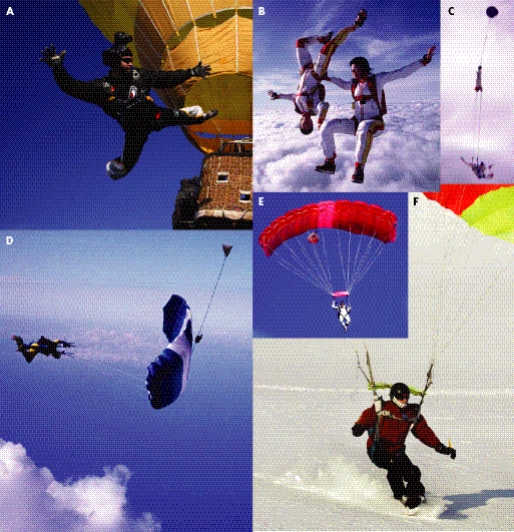Figure 1 The sport of skydiving: jumpers exit the aircraft (A) at an altitude of 1–4 km above ground level, and fall freely (B) approximately 1 min. Free fall through the atmosphere feels somewhat like submersion in rapidly flowing water, with velocity ranges between 110 and 500 km/h vertically and 0 and 140 km/h horizontally. Each skydiver carries two parachutes, integrated into a single harness. Should the main parachute malfunction, it is manually disconnected and the reserve used. All student skydivers in training and most licensed skydivers in Sweden carry an automatic activation device that deploys the reserve at a preset altitude and vertical velocity, if the skydiver has lost altitude awareness or become incapacitated. Parachute deployment is initiated by releasing a small round parachute, called a pilot chute (C), that anchors into the airstream and pulls out the wing parachute. The main parachute is deployed usually at approximately 1 km above ground level. The wing parachute is subsequently piloted to a designated landing area called a drop zone. The transient wing parachute velocity ranges between 0 and 190 km/h vertically and 0 and 140 km/h horizontally. Wing parachute of an experienced skydiver (D) and of a student (E). (F) Shows forward landing speed by trace in snow. Photos courtesy of Hans Berggren and Marcus Runsten. Informed consent was obtained for publication of the photos.

An official website of the United States government
Here's how you know
Official websites use .gov
A
.gov website belongs to an official
government organization in the United States.
Secure .gov websites use HTTPS
A lock (
) or https:// means you've safely
connected to the .gov website. Share sensitive
information only on official, secure websites.
